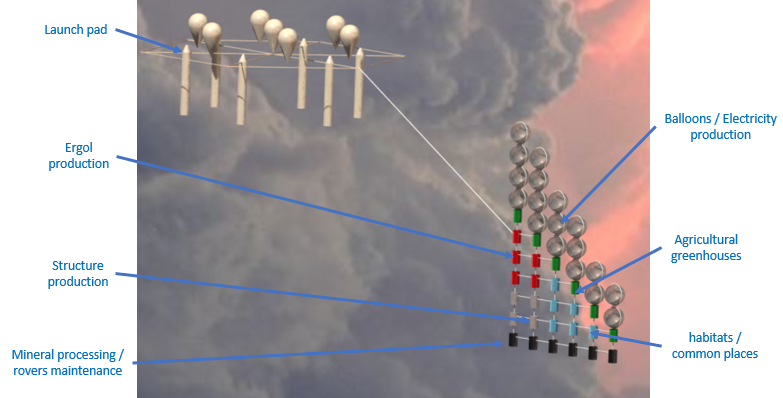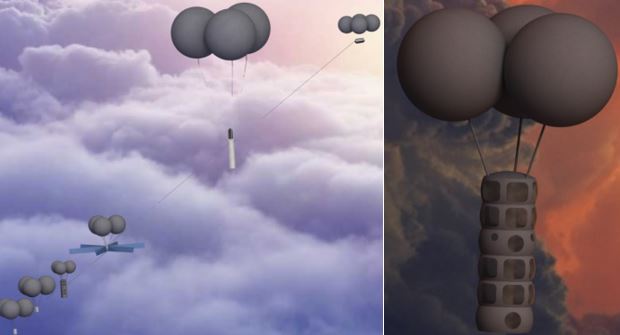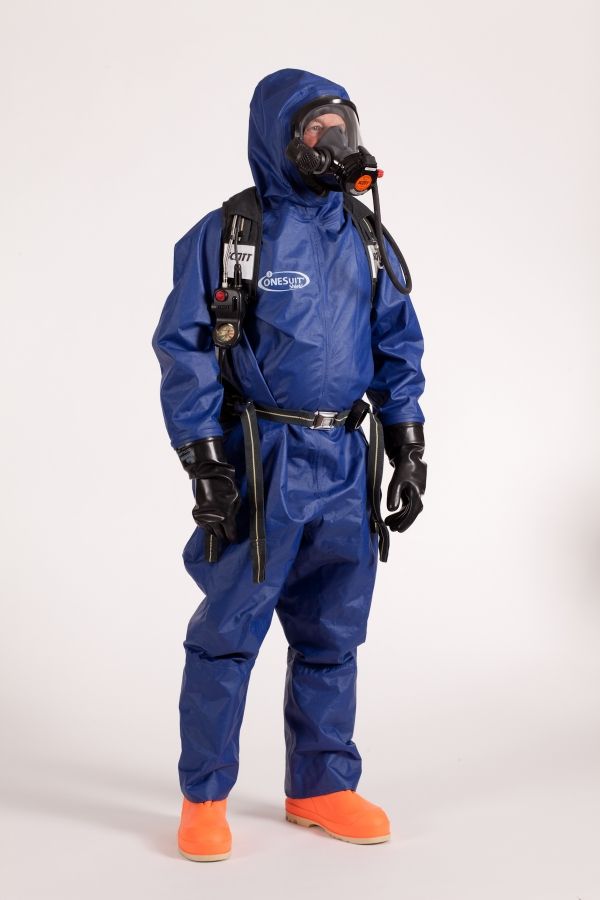In order to keep the unit of the base, the different modules are connected by cables attached drones once the modules are brought together by the wind. Them cables also serve as a support for the mini cable car for transfers crew and cargo. On the other hand, to prevent the modules from coming collide, they are arranged on stairs. This architecture is dictated by the rotation of the atmosphere from west to east and by the speed gradient in depending on the altitude. Indeed, a module placed slightly higher than the will experience a higher wind speed on his balloons, which has led to tends to keep the modules away, and thus keep the cable stretched. With increasing the number of modules (especially for a colony) it is possible to attach several to the same group of balloons, in order to create a 2D triangular mesh base. In addition, this configuration allows, in the event of a leakage on a balloon, spread the load over the other modules (at the cost of a lowering the base) through the cables, time to make the repairs.

With the step of ISRU, one of the main elements of the Venusian base, is habitat. Given the pressure, temperature and absence of radiation, a simple waterproof wall is enough to separate the breathable air from the inside of the CO2 and external sulphuric acid. For security reasons, the interior is slightly overpressure, this helps to stiffen the walls flexible and, above all, to prevent the infiltration of CO2 and acid in the event of tear. For reasons of transport compactness, the habitat has the shape a cylinder cut into several rigid floors, connected by walls soft interiors and exteriors to fold it like an accordion. It consists of 6 floors:
2nd floor: sleeping area consisting of 6 individual cabins.
1st floor: living space with living room, dining room, kitchen, bathroom, toilet, gym.
Ground floor: technical area with life support, access to the cable car and connection to others Modules. As the life support is not foldable, the ground floor is the only which will be deployed during transport, it will therefore contain the development inflatable and folding (camping type) of other floors. It also contains 600 days freeze-dried food, in case the freight modules are lost or the cargo modules are lost The crew is stranded on Venus.
Floors -1 to -3: these three floors are composed of different laboratories and spaces preparation for scientific equipment (aerial drones, rovers, surface, descent suits).

| Home module | Note | Mass (kg) |
| Balloons | 400 | |
| Hydrogen Lift | 500 | |
| Energy | 500 | |
| Structure | 1 250 | |
| Cable – cable car | Connected to ISRU and cargo modules | 500 |
| Life support | 1 250 | |
| Computer | 350 | |
| Development | 1 500 | |
| Emergency freeze-dried rations | For 600 days | 1 000 |
| Reserve design | 550 | |
| Total | 8 000 |
If it becomes necessary to carry out exits for the maintenance of the modules, or recover experiments, a simple waterproof suit covered with PTFE with an influx of oxygen is enough. Since the fall would be fatal even before contact with the ground, with crew members making an Atmospheric ExtraVehicular activity (AEVA) will therefore have to be maintained by and will be able to use a miniature hydrogen recovery system.
